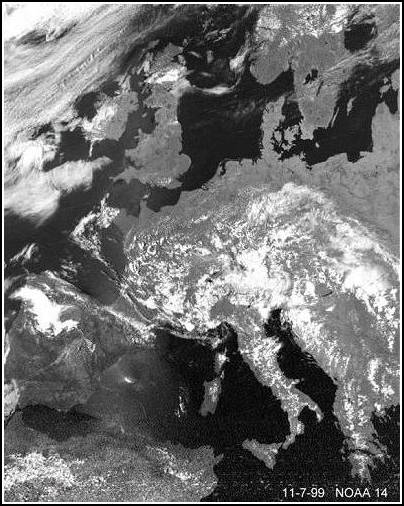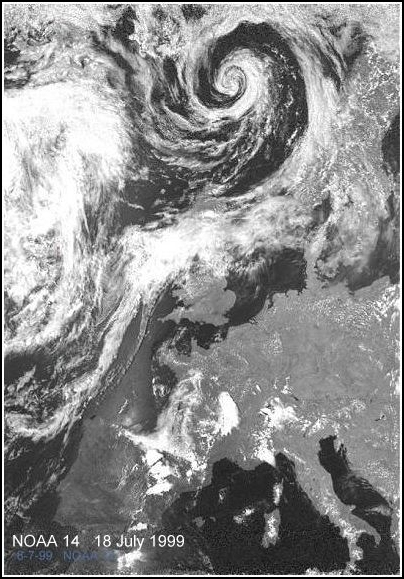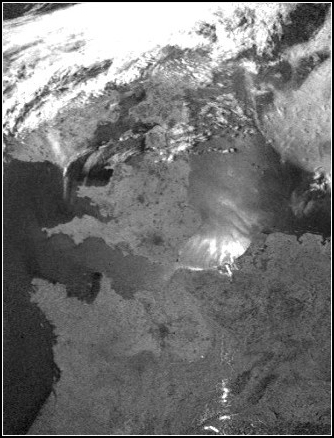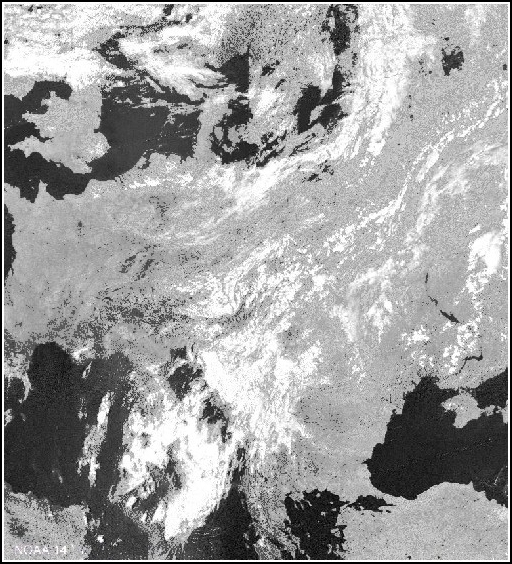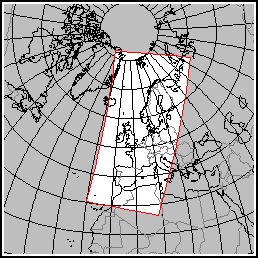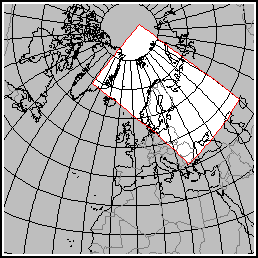The images shown here were received in the summer of 1999 using a very cheap 'scanner' (Realistic PRO27, ten pounds second hand) fed from an amateur radio antenna in the loft pointing in the general direction of 'upwards'.
The audio from the receiver was fed into the sound card of a computer and decoded using 'Wxsat' software available free from the internet.
The NOAA satellites orbit the earth once every 90 minutes or so. However, because of the rotation of the earth, there are only a couple of passes per day when a particular satellite will appear above the horizon and can be received. The times of the passes are published in the RIG quarterly journal or can be calculated using satellite prediction software available free from the internet. Since these predictions are based on the known laws of physics they are
extremely accurate.
Here in the UK a 'high pass', ie one in which the satellite passes virtually overhead, can image the earth from North Africa in the south to Greenland in the north taking in the whole of Europe. With such a pass the satellite would take about 15 minutes to travel from one horizon to the other. On the other hand, a low pass to the east of only a few degrees may only last a minute or two but could image the area around the Caspian Sea and parts of Russia and the UK may not even feature.
A satellite can pass from either North-to-South or South-to-North. This is because, within its fixed orbit around the earth, the earth is also rotating. If you can't
visualize this then try modeling it with everyday spherical objects - apples, oranges, footballs and peas usually work !
